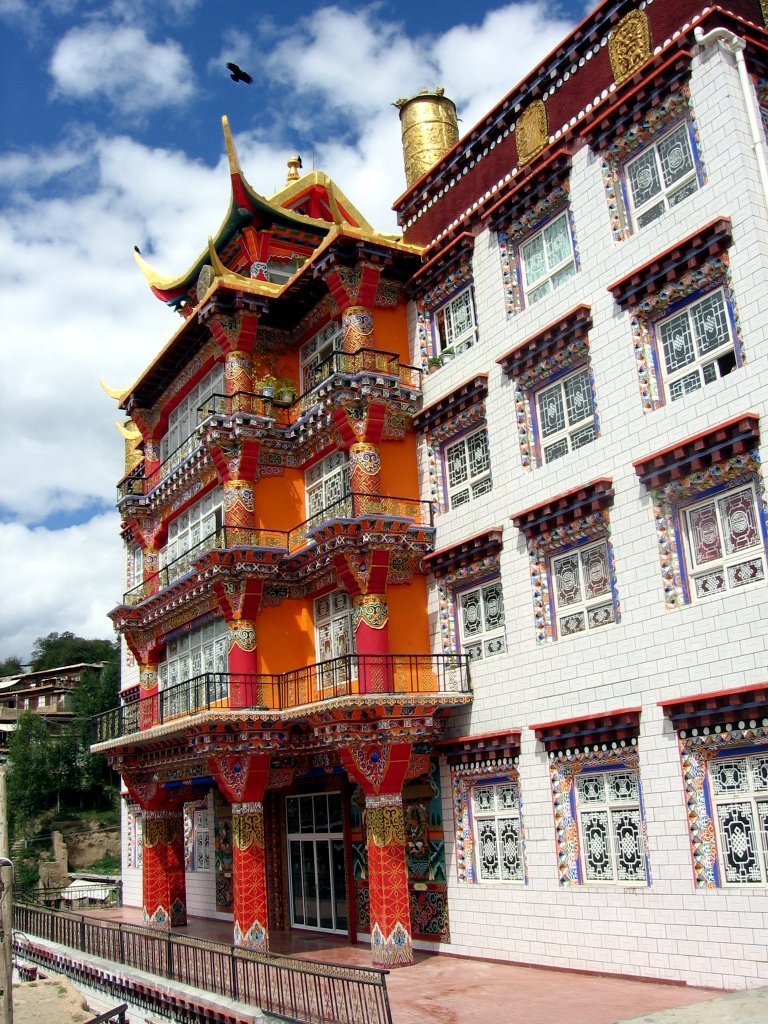Kandze Monastery on:
[Wikipedia]
[Google]
[Amazon]
Kandze Monastery (also Ganzi or Garze Monastery or Gompa) is situated 2 km north of Garzê Town on a hilltop overlooking the town, in Tibet.
 ;Assembly Hall
The main Assembly Hall building has a golden roof and has views of the valley and nearby town. It is approached by a long flight of stairs and the inner sanctum is reached though long passageways formed by red wooden columns.
Inside three sets of images are displayed high up in glass cabinets representing the founders of the
;Assembly Hall
The main Assembly Hall building has a golden roof and has views of the valley and nearby town. It is approached by a long flight of stairs and the inner sanctum is reached though long passageways formed by red wooden columns.
Inside three sets of images are displayed high up in glass cabinets representing the founders of the
History
The monastery was built ''c''. 1642 CE by the Khoshut or Qosot Mongols overlooking their castles known as Mazur and Khangsar. It once housed 1,500 monks making it, with Chamdo, the largest inKham
Kham (; )
is one of the three traditional Tibetan regions, the others being Amdo in the northeast, and Ü-Tsang in central Tibet. The original residents of Kham are called Khampas (), and were governed locally by chieftains and monasteries. Kham ...
. The pilgrimage circuit around the monastery was almost eight kilometres long.
In the 1909-1918 war the castles were occupied by Chinese troops and are now in ruins.
It has been extensively renovated since 1981 and now houses about 700 monks, including three tulkus - one of whom, Lamdark Rinpoche, returned from Switzerland and established a girls' school.
Description
 ;Assembly Hall
The main Assembly Hall building has a golden roof and has views of the valley and nearby town. It is approached by a long flight of stairs and the inner sanctum is reached though long passageways formed by red wooden columns.
Inside three sets of images are displayed high up in glass cabinets representing the founders of the
;Assembly Hall
The main Assembly Hall building has a golden roof and has views of the valley and nearby town. It is approached by a long flight of stairs and the inner sanctum is reached though long passageways formed by red wooden columns.
Inside three sets of images are displayed high up in glass cabinets representing the founders of the Nyingmapa
Nyingma (literally 'old school') is the oldest of the four major schools of Tibetan Buddhism. It is also often referred to as ''Ngangyur'' (, ), "order of the ancient translations". The Nyingma school is founded on the first lineages and transl ...
, Kadampa and Gelugpa lineages. There are also a number of fine tangka
The tangka (Tibetan: ''Tam'' or = ''silver tangka'') was a currency of Tibet until 1941. It was subdivided into 15 or and, from 1909, it circulated alongside the '' srang'', worth 10 sho.
Coins
Coins struck to the tangka standard were first ...
s representing the meditational deities, Guhyasamaja, Cakrasamvara, and Yamantaka.
;Maitreya Hall
The Maitreya Hall contains a huge image of Jampa (